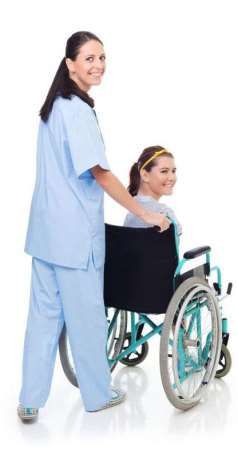The relevant legislation the support sector aged care act
Version control & document history
| Date | Version | |||
|---|---|---|---|---|
| 14 June 2016 | Version 1.0 final produced following validation | 1.0 | ||
| 17 June 2016 |
|
1.1 | ||
| 16 September 2016 |
|
1.2 | ||
| 29 September 2016 | 1.3 | |||
| 20 November 2017 | Removed ‘Conclusion’ page. Minor changes in wording and format. |
1.4 | ||
| 23 January 2018 | Updated Subject Title | 1.5 | ||
| 9 March 2018 | Updated broken links. | 1.6 | ||
| 27 April 2018 | 1.7 |
This is an interactive table of contents. If you are viewing this document in Acrobat,
|
||
|---|---|---|
| II. |
|
|
| III. | ||
| IV. | ||
| V. |
|
|
| VI. |
|
|
This unit applies to all individual support workers who require knowledge of workplace health and safety (WHS) to carry out their own work, in both centre-based and home-based service provision.
About this Unit of Study Introduction
| Version No.1.7 Produced 27 April 2018 |
|---|
This Learner Guide Covers
Working Legally and Ethically
1.Identify and Respond to Legal Requirements3.Follow Safe Work Practices for Infection Control
4.Contribute to Safe Work Practices in the Workplace
To obtain additional support you may:
▪ Search for other resources. You may find books, journals, videos and other materials which provide additional information about topics in this unit.
|
|---|
Facilitation
▪Provide you with online webinar times and availability.
▪Use ‘action sheets’ to remind you about tasks you need to complete, and updates on websites.
At other times, studying can seem overwhelming and impossibly demanding, particularly when you have an assignment to do and you aren’t sure how to tackle it, your family and friends want you to spend time with them, or a movie you want to see is on television.
Sometimes being a student can be hard.
Try to set up a place at home or at work where:
1.You can keep your study materials,
2.you can be reasonably quiet and free from interruptions, and
3.you can be reasonably comfortable, with good lighting, seating, and a flat surface for writing.Do not forget that other people can be valuable study resources. Your fellow workers, work supervisor, other students, your facilitator, your local librarian, and workers in this area can also help you.
Time
Study Strategies
Talk to other people (fellow workers, fellow students, friends, family, or your facilitator) about what you are learning. As well as help you clarify and understand new ideas, talking also gives you a chance to find out extra information and to get fresh ideas and different points of view.
Using this Learner Guide
4.Direct you to other sources of additional knowledge and information about topics for this unit.
|
Version No.1.7 Produced 27 April 2018 |
|---|
across anything you do not understand:
1.Talk to your facilitator.
6.Talk to people about your study. Talking is a great way to reinforce what you are learning.
7.Make notes.
This Learner Guide contains learning checkpoints which are represented by the
following icons:
 |
|---|
Checkpoint! Let’s Review contains review questions for you to answer on your own to ensure that you have learned key points from the relevant section. If you have a hard time answering these questions, do not worry. You can always revisit chapters and take another shot at these review questions.
Additional Research, Reading, and Note-Taking
resource materials. This will structure your reading and save you time.
This chapter of the Learner Guide will discuss working legally and ethically in the support sector.
But first, what do ‘legal’ and ‘ethical’ mean?
▪In the ethical framework, determination of the ethical course of action is determined by the individual. Ethics may be influenced by our belief systems (religion), social expectations, the law etc.
Although the two have different meanings, they are the same in a sense. For one, legal and ethical frameworks are both made based on making decisions about support matters, including how organisational policies and procedures are made in a support facility.
| Version No.1.7 Produced 27 April 2018 |
|---|
An action can be A, B, C, or D:
A.It can be both legal and ethical
B.It can be legal but unethical
C.It can be ethical but illegal
D.It can be both illegal and unethicalNow that you understand what ‘legal’ and ‘ethical’ mean and how they are related, similar to, and different from each other, it’s time for a recap. Check the questions found below and see if you can answer them.
II. Understanding your Own Role and Responsibilities
At the start of your work at a support facility, you will be provided with a Job Description (sometimes called a Position Description) that outlines your roles and responsibilities as an individual support worker. This is typically given during your induction to the support facility.
Below are examples of job descriptions for an individual support worker.
| Version No.1.7 Produced 27 April 2018 |
|---|
▪Clean and prepare medical equipment and instruments.
▪Take patient’s electrocardiograph (ECG) readings, samples, and fluid balances.
▪Clerical and phone duties.
▪Assist and prepare for patient discharges.
▪Good communicator and have good people skills.
▪Able to work with people from a variety of backgrounds and cultures.
▪Punctual.
(Source:www.cshisc.com.au)
As a home individual support worker, you may perform the following tasks: ▪Assist people who require assistance with activities of daily living.
▪Take over caring responsibilities temporarily to provide a break for the regular carer (e.g. family, friends, etc.).
▪Promote client’s independence.
▪Help clients with personal care such as eating, showering, toileting.▪Clean and prepare medical equipment and instruments.
▪Prepare food and serve drinks.
▪Clerical and phone duties.
▪Good with time-management.
▪Physically fit and able to lift heavy objects.
| Version No.1.7 Produced 27 April 2018 |
|---|
Page 16
Starting Work in a Support facility
The contract should then discuss the specific terms of your employment, presenting a range of responsibilities, tasks and duties that you will have to complete within the workplace by following the centre p0licies and procedures.
It is important to read and understand your contract thoroughly before signing to ensure that both you and the employer are getting a fair deal.
Fair Work Australia
There are also both Commonwealth and State laws, industrial awards, enterprise agreements and the Australian Industrial Relations Commission that provide frameworks for employment systems in the workplace.
Your orientation/induction typically occurs on your first day, where you will be introduced to the centre’s policies, procedures, responsibilities, evacuation points, toilets, accessible areas, etc.
This is done so that the work to be performed and service routines can be
▪Discussion of the job description, responsibilities, expectations and overall working environment.
▪Details of awards or agreements about wages, superannuation, taxation, employment conditions, rosters, recording hours worked, communication hierarchy within the service, organisational policies and procedures, etc. These are normally communicated through a staff handbook.


|
Version No.1.7 Produced 27 April 2018 |
|---|
Page 19
The rights of individual support workers are protected by workplace/industrial relations legislation:
▪Fair Work Commission (FWC)
Responsibilities of an individual support worker
To put it simply, your legal responsibility as an individual support worker is to abide by the law, the relevant legislation in the support sector (Aged Care Act, Fair Work Act, WHS Act, Privacy Laws, Anti-Discrimination Laws, and other relevant legislation), to work not only with sufficient awareness of your clients’ and your support facility’s rights and responsibilities but also working in accordance with these rights and responsibilities, and most importantly to work within the scope of your role and responsibilities outlined in the job description.
To be able to work legally and ethically, you must also be fully aware of your client’s rights and responsibilities, as well as the rights and responsibilities of the service provider (e.g. the aged support facility).
The rights and responsibilities of care recipients or your clients are outlined in the
Page 21
convictions, and manage reportable assaults.
Access and read full copies of these resources by holding Ctrl and clicking on the blue links.
|
|---|
Individual support workers should treat residents and their families, the provider, staff, and attending professionals with respect, dignity, and courtesy.
|
Version No.1.7 Produced 27 April 2018 |
|---|
▪Observe safe work practices to minimise the risk of a workplace injury to residents, self, and others.
▪Provide and promote to all residents and their families/carers information regarding advocacy services and complaints mechanisms.
Individual support workers should:
▪Respect the rights of residents, their families/carers, other staff, and the provider, to their own personal, cultural, and religious beliefs.
▪Provide opportunities for residents for self-development and to maximise their potential for well-being.
▪Encourage residents or their families/carers to take responsibility for their actions and choices.
| Version No.1.7 Produced 27 April 2018 |
|---|
Individual support workers should:
▪Adhere to all the ethical standards of the home.
▪Report any observed failures of the standard of care through the appropriate complaints mechanisms.
▪Participate in risk reduction programs where mistakes and adverse events are identified, reported without blame, discussed, and corrected.
Individual support workers should undertake all care, processes, and tasks in a manner that respects the privacy and confidentiality of residents and their families, other staff members, and the provider.
|
|---|
▪Support the rights of married couples to live a married life.
▪Provide ease of access for families and other visitors with due regard for the wishes of residents.
 |
|
|---|
V. Workplace Policies and Procedures
When you start working in a support facility, you will be oriented to the organisation’s policies and procedures. As a worker in the support facility, you will be required to follow these policies and procedures when you carry out your tasks.
| Work Health | Work Hours |
|
|---|---|---|
| & Safety | ||
| & Dress Code |
|
|
| Grievance & | Code of |
|
|---|
Specifically, workplace policies, procedures, and protocols are typically developed and reviewed following the process illustrated below:
Review and Revise
Implement
 |
|
|---|
In the previous sections, we discussed what ‘legal’ and ‘ethical’ mean, what legal and ethical frameworks are, and the legal and ethical responsibilities of individual support workers.
In this section, we will be discussing some legal and ethical considerations in the support industry that have an impact on your role as an individual support worker.
A home individual support worker may have breached this when they have the flu and still shows up at a client’s private home where a child is also present. In doing this, the individual support worker has put the child and the client ’s health at risk.
| Respect | Professionalism | |
|---|---|---|
| Health and | Financial | |
| safety | matters and |
|
| conflicts |
|
oAllow many issues to be dealt with quickly and effectively.
oEnhance the on-going relationship between the service provider and the care recipient, their family, and representatives.
▪Discrimination
Strict policies and procedures are in place to ensure the organisation is complian twith relevant anti-discrimination laws (e.g. policies on access and equity).
| Version No.1.7 Produced 27 April 2018 |
|---|
Duty of care is a legal obligation of support facilities and individual support workers to avoid acts of omission (failing to act) that are likely to endanger clients and others.
For example, an individual support worker’s duty of care includes ensuring that a venue where her clients’ are holding an activity is safe from any slip or trip hazard. In this scenario, the individual support worker fails to fulfil her duty of care if she has overlooked to secure or cover the electrical wires running across the walkways.
Human rights, as recognised in the support sector, encompass the following:
Universal Declaration of Human Rights
Individual support workers are required to abide by the Universal Declaration of Human Rights, as they are incorporated into relevant industry standards and legislation. The Universal Declaration of Human Rights is acknowledged in Australia’s acts, e.g. Disability Discrimination Act 1992.▪Receiving client feedback.
▪Service standards or accreditation standards.
▪Mandatory Reporting
Mandatory reporting means mandated or required by the law. This includes mandatory reporting procedures for:
oSuspected cases of abuse
oSuspected cases of neglect
oWHS incidents
oEmergency incidences
oHealth concerns and other relevant changes in client’s health
condition, etc.▪Practice Standards
There is a set of practice standards for each profession, e.g. nursing standards, accounting standards, etc.
An individual support worker violates this when they become too involved in a client’s personal matters (e.g. family, financial, etc.), or the individual support worker enters into a romantic relationship with a client.
▪Privacy, Confidentiality and Disclosure
An individual support worker must have an idea of how policies, procedures, and other workplace documents are formed in the policy framework. The illustration below explains how organisational policies and procedures, guidelines, and other workplace documents are derived from the relevant legislation:
|
Version No.1.7 Produced 27 April 2018 |
|---|
In completing, maintaining, storing, workplace records, individual support workers must comply with privacy laws, and adhere to legal and ethical considerations for privacy, confidentiality, and disclosure. As part of this, the organisation must have procedures and protocols to ensure the safety of clients’, as well as employees’ personal information.
Other legal and ethical considerations in the support sector include:
Guide.)
▪Work Health and Safety
Version No.1.7 Produced 27 April 2018 Page 37 |
|---|
Legal Issues and Breaches*
▪Abuse and neglect within the nursing home/residential support facility*▪Discrimination and harassment of clients
▪Negligence of duty of care
▪Breach of privacy and confidentiality in relation to client’s medical and care records*
▪Non-compliance with legislative requirements such codes of practice, codes of standards, etc.*Note that some of the issues above can
have both legal and ethical implications– just as we previously illustrated in our
A, B, C, or D example – how an action
can be both illegal and unethical.
|
|---|
Reporting Unethical Conduct
What would you do if a co-worker does something similar to the examples provided above? Your first option is to approach that co-worker in hopes of resolving the issue through a discussion. However, if this is not successful, you will need to report this to your supervisor or someone in higher authority.
3.Who else was present?
4.What was committed? How was the act unethical?
5.What other actions have you taken?
| Version No.1.7 Produced 27 April 2018 |
|---|
facility:
▪Is in a position to take advantage of a client.
must inform management as soon as possible to rectify the situation.
|
||
|---|---|---|
| Version No.1.7 Produced 27 April 2018 | ||
| Page 41 | ||
4. What is an unethical conduct? Is it considered unethical to not give medication to a client who is refusing this treatment?
5. What is a conflict of interest? Give an example of a potential conflict of interest.
 |
|---|
How you will respond to these legal and ethical issues, and breaches will always depend on the nature of the situation. An action or a number of steps can be taken:
Consult a co-worker or your supervisor
As stated earlier, before you take any actions when responding to legal and ethical situations in the workplace, make sure that you are acting in line with your organisation’s policies and procedures, protocols. This may include who to direct the incident or the issue, any workplace documents that you have to complete, or any grievance or complaints procedure that you need to follow, etc.
Confronting those involved
etc. are completed.
Mandatory or compulsory reporting
A reportable assault as defined in the Aged Care Act means:
o Unlawful sexual contact with a resident of an aged care home, or o unreasonable use of force on a resident of an aged care home.▪Ensure staff members report any suspicions or allegations of reportable assaults to the approved provider (or other authorised person), to the police and, the department.
For example:
What will you do if you are in this individual support worker’s shoes?
Page 44 |
|
|---|
▪Be very clear of your organisation’ spolicies, and
procedures, code of conduct, guidelines, protocols, etc.▪Demonstrate a commitment to a moral standard of professional behaviour, which you uphold at all times.
•What do the relevant legislation and other guidelines and standard say?
Liaiseand consult
Come to a decision
• Do I need to get a permission for any action I am about to do? **For any decision you make, ensure that this is in line with your duty of care**
(Source:
|
Version No.1.7 Produced 27 April 2018 |
|---|
VII.Contributing to Workplace Improvements
|
|---|
survey sheets and questionnaires, consultation, etc.
Below are some ways in contributing to improvements at your support facility
|
||
|---|---|---|
| ▪ | ||
Version No.1.7 Produced 27 April 2018 |
||
Workplace health and safety (WHS) is everyone’s responsibility, including the individual support worker’s.
In the first part of this Learner Guide, we discussed that the individual support worker has the legal and ethical responsibility to comply with the laws that apply in the support sector. These laws include WHS legislation.
A ‘risk’ is the likelihood and consequence of the
hazard affecting people and property.
In this part of the Learner Guide, you will learn about safe practices for direct client support and how to follow them. This is in part of you fulfilling your duty of care to your clients and others.
|
Version No.1.7 Produced 27 April 2018 |
|---|
State and Territory WHS Authorities
Workplace regulations will typically include provisions to meet specific duties under the WHS Acts, and other procedural or administrative requirements to support the WHS Act. These may include but are not limited to:
▪Transferring people safely
▪Repositioning people in bed
▪Transferring people from beds and chairs
▪Transferring people from toileting and bathing
▪Assisting people who have fallenRights and Responsibilities of Employers
They must exercise due diligence to ensure the organisation complies with its health and safety duties. This duty relates to the strategic, structural, policy and key resourcing decisions; that is, how the place is run. Due diligence includes taking reasonable steps to:
▪Acquire and keep up to date knowledge of work health and safety matters.
▪Verify the provision and use of the relevant resources and processes.
The following employer rights and responsibilities are applicable to the support
Employees must take reasonable care to avoid
adversely affecting the health or safety of self or
any other person (co-workers or clients) through
an act or omission at work. Workplace
|
|---|
▪Comply with any policy that applies at the workplace published or approved by the minister after seeking the advice of the advisory committee.
▪Ensure that the employee is not, by the consumption of alcohol or a drug, in such a state as to endanger the employee’s own safety at work or the safety of any other person at work.
relating to health or safety at the workplace that has been notified to workers.
The following employee rights and responsibilities are applicable in the support
▪Take reasonable care of the health and safety of others▪Report any unsafe work practices, accidents, or injuries
Policies and procedures have been developed to minimise or eliminate the health and safety risks caused by hazardous manual handling and slips, trips and falls. Examples include but are not limited to:
▪Transferring people safely
▪Repositioning people in bed
▪Transferring people from beds and chairs
▪Transferring people from toileting and bathing
▪Assisting people who have fallen
▪▪Incident reporting mechanisms which are used and acted upon
▪Equipment fit for the purpose intended, well maintained, and staff
▪Trained in its use
▪Management and staff involvement in identifying and resolving the infection▪Control risks
|
|---|
Version No.1.7 Produced 27 April 2018 |
|---|
Page 56
Direct client care, as defined by the Medical Dictionary, is providing personal care to a client by a staff member, or the individual support worker.
Safe practices for direct client care in support facilities involve the following processes:
Carefully go through the form as you will be required to use one during your vocational placement.
When providing a risk rating for each safety check, refer to the following table:
| Workplace Safety Inspection Sheet | ||||||||
|---|---|---|---|---|---|---|---|---|
|
||||||||
|
Signature: | |||||||
| Position | Date: | |||||||
| Work area: | ||||||||
| Date of inspection: | ||||||||
| Area | Safety Check | Risk Rating | Associated Risks | Recommended Control | ||||
|
No blind corners | Low |
|
|||||
| Choose an item. | ||||||||
| Choose an item. | ||||||||
|
Choose an item. | |||||||
| Storage |
|
Choose an item. | ||||||
| Choose an item. | ||||||||
| Choose an item. | ||||||||
| Electrical | Choose an item. | |||||||
| Learner Guide 2 | Version No.1.7 Produced 27 April 2018 |
|---|
Page 59
| Version No.1.7 Produced 27 April 2018 |
|---|
Client-Related Risk Factors or Behaviours of Concern
The behaviour of concern is defined by Eric Emerson, Professor of Disability and
| An impairment | Loss and grief |
|
|
|---|---|---|---|
Understanding the person’s experiences and being proactive in supporting the
person to meet their needs can help to alleviate and reduce behaviours of concern.
4.Look for triggers that influence the behaviour.
5.Observe the behaviour.
The documentation that may be completed depends on the organisation and may
People with behaviour of concern may be subjected to restrictive practices. This involves the use of practices and interventions that restrict the freedom of movement or rights of an individual. These primarily include seclusion and restraint (physical, chemical, social or mechanical).
|
|
|---|
Hazard Reporting
▪Where possible, staff should take immediate action to remove or minimise the risk associated with any hazards. In some circumstances, to minimise this may involve removing equipment from service, and applying ‘out of service’ tags or isolating an area where a spill may have occurred. You must work within your role and responsibilities.
the appropriate person within 24 hours.
Incident Reporting
▪Death of a person
▪A ‘serious injury or illness’
▪A dangerous incident arising out of work carried out by abusiness, undertaking or a workplace
|
Important! |
|
you | |||||
|---|---|---|---|---|---|---|---|---|
|
|
procedures | for | |||||
|
||||||||
Safety considerations when working in a home-based environment
1.Rights and responsibilities of workers and clients
▪Ensuring their pets are controlled during service provision.
▪Providing cleaning equipment that is suitable and well maintained.
my care.
|
Version No.1.7 Produced 27 April 2018 |
|---|
still working or need to be altered within the scope of responsibility.
Workers’ rights include:
▪Have policy and procedure in place for reporting risks/hazards.▪Be provided with relevant WHS training.when working in a home-care environment.
▪The very old and/or people with disability may be dependent on others for their safety and escape.
of a fire.
Learner Guide 2 Page 66 |
||
|---|---|---|
|
||
| Version No.1.7 Produced 27 April 2018 | ||
3.Risks to personal safety
When carrying out tasks ensure that you follow safe practices to avoid the risks above.
4.Workplace Policies and Procedures, and Emergency procedures
▪Fire Emergency Procedures
▪Disaster Emergency Procedures
| Learner Guide 2 | ▪ |
|
|---|---|---|
| ▪ | ||
| Version No.1.7 Produced 27 April 2018 | ||
| Page 68 |
Load (force application on
individual body parts)The Anatomy of the Back
▪The muscles and joints at the back receive the least strain in an upright posture which maintains the natural curves.
▪These natural curves should be maintained in order to prevent back pain and
Good posture may be hard to achieve if you don’t use it regularly, as sets of muscles and ligaments get used to being in a certain position. For example, in a constant slouched position the back is hunched and the shoulders forward. The back muscles are always stretched, and the chest muscles grow tight. When you straighten up, these muscles have to work hard and cannot fully relax. The more you practice good posture, the easier it gets.
|
Version No.1.7 Produced 27 April 2018 |
|---|
▪Back in neutral position – maintain curves of the spine▪Hips flexed
▪Knees bent
▪Feet positioned about a shoulder width apart
▪Your bottom should stick out
▪When you begin lifting, maintain neck in a neutral positionAssess your own posture
▪Do you maintain the natural curves of your spine as much as possible?
▪Do you adjust your surroundings, so you can maintain good posture whatever your task?
settings involves the transfer and lifting of people in a variety of situations.
In order to reduce the risk of injury from client handling activities a ‘no lifting’
Assessment and competency-based training in manual handling skills and use of manual handling equipment are given to staff in order to assist in the implementation of this principle.
There are various types of equipment available to assist in the care of the person that needs assistance with their personal care. Workplace health and safety is always of prime importance when it comes to the care of a person, and work tasks must always be handled with safety in mind. The instructions for equipment use must always be followed and always follow organisational policy and procedures. This includes attending training in manual tasks and being competent in the safe use of equipment. If equipment is faulty, report it to your supervisor immediately and seek guidance.
▪Maintain the person’s privacy and dignity at all times.
▪Use manual handling equipment (e.g. hoist) correctly as per your training and the manufacturer’s instructions.
|
|---|
Risk assessments are conducted to eliminate, reduce or control risks to workplace
▪Management is consulted. Actions, recommendations, and guidelines developed.
▪Employees are trained in safe manual handling principals▪A continuous monitoring and reviewing process is implemented
floor.
Step 2 – Assess the risk.
| Version No.1.7 Produced 27 April 2018 |
|---|
Page 72
Step 3 – Control the risk
Level 3
▪Use administration controls e.g. develop policy and procedures▪Use PPE (personal protective equipment)
The Code of Practice manual outlines hazard identification, assessment and control.
The Hazardous Manual Tasks Code of Practice can be found at the following
 |
|||
|---|---|---|---|
|
|||
|
|---|
| Queensland |
| Western Australia | |
| Tasmania |
|
|
|---|
▪People
▪Objects, e.g. air-conditioning system
▪Animals
▪Environmental, e.g. soil, water.Here’s how you can help in preventing the spread of infection by:
▪Using of aseptic techniques when required.
▪Avoid touching sharps when disposing of materials.
Personal Protective Equipment (PPE)
Plastic apron
Disposable plastic aprons are required only during procedures in which clothing islikely to be contaminated by body substances.
▪Cuts and abrasions should be covered with a waterproof dressing.▪Staff must ensure nails are kept short and clean if there is significant physical client contact.
▪Staff with dermatitis on their hands should seek medical advice.
| Version No.1.7 Produced 27 April 2018 |
|---|
2.Use liquid pump soap (an antiseptic solution is to be required for staff before performing an aseptic procedure).
3.Avoid touching sink.
8.Turn the tap off with a dry paper towel.
isolated in a separate room and be provided with separate toilet and bathroom.
Some infections may require the person to attend a health care institution that has specialist facilities for infectious diseases where additional precautions are required.
Poisons and Specific Hazards
| Sharp Edges |
|
|---|
| Wear Mask |
|---|
| Version No.1.7 Produced 27 April 2018 |
|---|
workplace. By following and applying safe work practices, we have discussed you are
already contributing to your organisation’s safe work practices.
procedures in the workplace.
▪Befriend experienced co-workers
oNo one knows the company better than someone who has been there for a long time. These employees know the company well. They may become an adviser to you and help you to avoid common mistakes.▪Remain observant.
| Version No.1.7 Produced 27 April 2018 |
|---|
Maintaining Currency of Safe Work Practices
Safety work practices must always adapt to changes; changes in policies, laws, environment, and advancements in technology. In order to maintain the currency of safe work practices, you can:
▪Read workplace documents
▪Seek feedback from supervisor
▪Conduct online research
▪Keep up to date with recent information
End of Document















